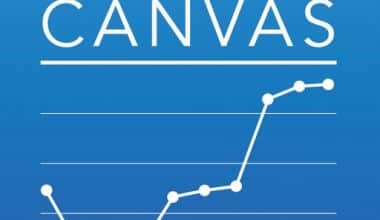A debit options strategy, where you charge the premium in advance, also seeks to benefit from theta is known as a calendar spread. Calendar spreads options can be helpful in low-volatility environments. Also, it can be useful if you believe a stock or ETF could trend sideways in the near term.
Here’s what you should know about calendar spread options, the call, and puts including ideas about when calendar spreads could be useful, possible profit and loss (P&L) points, and risks.
What is a Calendar Spread?
A calendar spread is an options or futures strategy that involves taking a long and short position on the same underlying asset with different delivery dates at the same time.
A traditional calendar spread option will include purchasing a longer-term contract and selling a shorter-term option with the same strike price. A diagonal spread occurs when they use two separate strike prices for each month.
Calendar spreads are also known as inter-delivery spreads, intra-market spreads, time spreads, and horizontal spreads.
Calendar Spreads Explained
The standard calendar spread trade entails selling an option (either a call or a put) with a near-term expiration date. It also entails simultaneously purchasing an option (call or put) with a longer-term expiration date. Both are of the same kind and usually have the same strike price.
- Sell short-term put/call options.
- Purchase longer-term put/call options.
- It is preferable, but not necessary, for implied volatility to below.
A reverse calendar spread is an inverse position, involving the purchase of a short-term option. It also involves the sale of a longer-term option on the same underlying security.
Particular Considerations
In a directionally neutral strategy, the aim of the exchange is to benefit from the passing of time and/or an improvement in implied volatility.
Since the aim is to benefit from time and uncertainty, the strike price should be as close to the underlying asset’s price as possible. The trade takes advantage of how short- and long-term options behave when time and volatility shift. All else being equal, an increase in implied volatility will be beneficial to this strategy. This is because longer-term options are more vulnerable to changes in volatility (higher vega). The caveat is that the two options can and will almost certainly trade at different implied volatilities.
All else being equal, the passage of time would have a positive impact on this strategy at the start of the trade until the short-term option expires. After that, the strategy is just a long call with diminishing returns as time passes. In general, the rate of time decay (theta) of an option increases as its expiration date approaches.
Calendar Spread Maximum Loss
Because this is a debit spread, the maximum loss is the strategy’s purchase price. The option sold is nearing expiration. Thus it has a lower price than the option purchased, resulting in a net debit or cost.
A steady to slightly declining underlying asset price during the life of the near-term option followed by a strong move higher during the life of the far-term option, or a sharp move upward in implied volatility, would be the ideal market move for profit.
The maximum benefit will occur at the expiration of the near-term option when the underlying asset is at or slightly below the strike price of the expiring option. The expiring option would have intrinsic value if the asset was worth more. When the near-term option expires useless, the trader has only a simple long call position with no benefit ceiling.
Essentially, a trader with a bullish longer-term view will lower the cost of buying a longer-term call option.
Read Also: COVERED CALL STRATEGY: 2021 Best 7+ Strategies To Scale Any Trading Condition (Updated)
An Example of a Calendar Spread
Assuming Exxon Mobile (XOM) stock is trading at $89.05 in mid-January, you will participate in the calendar spread:
- Sell the February 1989 call for $0.97 ($97 per contract).
- Purchase the March 89 call option for $2.22 ($222 for one contract).
- The spread’s net cost (debit) is thus (2.22 – 0.97) $1.25 (or $125 for one spread).
This calendar spread would pay off the most if XOM shares remain relatively flat before the February options expire. Thus, it allows the trader to earn the option premium. The second leg would benefit if the stock rises between then and the March expiry date. The perfect market change for profit would be for the price to become more volatile in the short term, yet to grow overall, closing just below 95 at the end of February. This causes the February option contract to expire worthless while also allowing the trader to benefit from price increases before the March expiration.
The option sold is nearing expiration and therefore has a lower price than the option purchased. Thus, this results in a net debit or loss. In this case, the trader hopes to profit from a rise in price (up to but not exceeding $95) between the time of purchase and the expiration date in February.
It is worth noting that if the trader had actually bought the March expiration, the cost would have been $222; however, by using this spread, the cost to make and keep this trade was only $125, making the trade one of greater margin and lower risk. The calendar spread strategy will benefit from a neutral, bullish, or bearish market trend, depending on the strike price and contract form used.
Call Calendar Spread
When you run a calendar spread with calls, you sell and buy a call with the same strike price, but the call you buy expires later than the call you sell. As expiration approaches, you’re taking advantage of accelerated time decay on the front-month (shorter-term) call. You want to buy back the shorter-term call for next to nothing just before the front-month expiration. Simultaneously, you will sell the back-month call in order to close your place. The back-month call should ideally still have considerable time value.
If you expect little change in the stock, create your calendar spread with at-the-money calls. Using slightly out-of-the-money calls if you’re mildly bullish. This will result in a lower initial investment.
Since the strike prices for the front-month and back-month options are the same, you cannot catch any intrinsic value on the options. It captures only time value. However, as the calls become deep in-the-money or well out-of-the-money, the time value begins to fade. At-the-money options optimize time value, so the stock price must remain as close to strike A as possible.
Strategy
I’m going to use a one-month calendar spread as an example for this Playbook. Please keep in mind that different time intervals are possible. If you intend to use more than a one-month interval between the front-month and back-month options, you must be familiar with the mechanics of rolling an option position.
- Sell a call with strike price A (near-term — “front-month”) expiration.
- Purchase a call with strike price A (expiration one month later — “back-month”).
- In general, the stock will be at or near strike A.
NOTE:
The level of knowledge required for this trade is considerable because you’re dealing with options that expire on different dates. You’re anticipating minimal movement on the stock within a specific time frame. It is possible to approximate break-even points, but there are too many variables to give an exact formula.
Because there are two expiration dates for the options in a calendar spread, you use a pricing model to “guesstimate” what the value of the back-month call will be when the front-month call expires. Ally Invest’s Profit + Loss Calculator can help you in this regard. But bear in mind, the Profit + Loss Calculator assumes that all other variables, such as implied volatility, interest rates, etc., remain constant over the life of the transaction — and they may not behave that way in reality.
You want the stock price to be at strike A when the front-month option expires.
Potential benefit is limited to the premium earned for the back-month call minus the cost to buy back the front-month call, minus the net debit charged to determine the position.
Limited to the net debit charged to develop the exchange.
NOTE:
You can’t accurately measure the risk at the initiation of this strategy, since it depends on how the back-month call performs.
After the trade is paid for, no additional margin is needed if the position is closed at the expiration of the front-month option.
For this technique, time decay is your mate. Since time decay accelerates close to expiration, the front-month call will lose value faster than the back-month call.
After developing the strategy, while you don’t want the stock to move much, you’re better off if implied volatility rises close to front-month expiration. That will cause the back-month call price to increase while having little impact on the price of the front-month option. (Near expiration, there is hardly any time value for implied uncertainty to mess with.)
What is the ideal expiration date for a calendar spread?
The ideal expiration date for a calendar spread is determined based on the goals of the trade and the market conditions. The goal is often to profit from time decay, so the expiration date should be chosen based on the expected rate of decay.
Can a calendar spread be used in any market?
A calendar spread can be used in any market that offers options, including stocks, indices, commodities, and currencies.
How do you manage risk in a calendar spread?
Risk in a calendar spread is managed by limiting the amount of capital invested in the trade and by using stop-loss orders to limit potential losses.
What is the potential reward of a calendar spread?
The potential reward of a calendar spread is determined by the difference in the rate of decay between the two options, as well as the price of the options themselves.
What is the impact of implied volatility on a calendar spread?
Implied volatility can have a significant impact on a calendar spread, as it affects the price of options and the rate of time decay.
How do you select the right options for a calendar spread?
The right options for a calendar spread are selected based on market conditions, goals of the trade, and the expected rate of time decay.
Can a calendar spread be used as a long-term investment strategy?
A calendar spread can be used as a long-term investment strategy, but it is typically more suitable for short-term or intermediate-term trades.
Conclusion
Calendar spreads can be efficient in low volatility environments. Also, it can be useful if you believe the underlying will trade within a narrow trading range in the near term. The logistics of setting up and rolling calendar spreads can seem daunting at first. However, once you split them down into individual parts and decisions, you might consider giving this strategy a thumbs-up, particularly in low-volatility, thumb-twiddling markets.
- COVERED CALL STRATEGY: 2021 Best 7+ Strategies To Scale Any Trading Condition (Updated)
- Sell Put Options Overview with Options Trading Examples
- BUYING A PUT OPTION: All you should know with examples
- PUT OPTIONS: How to trade put options in simple steps
- WRITING A COVERED CALL: How To Write An Effective Covered Call With Example( Update)






